Our activities in 2021
ANNUAL ACTIVITY REPORT
OF THE EUROPEAN COURT OF AUDITORS

European Court of Auditors
Who we are
- the European Union’s external auditor;
- established by the 1975 Treaty of Brussels, starting work in October 1977;
- a fully‑fledged European Institution since 1993 under the Maastricht Treaty;
- headquartered in Luxembourg;
- a collegiate body of 27 Members, one from each EU Member State, appointed by the Council after consulting the European Parliament;
- around 900 staff of all EU nationalities.
What we do
- make sure that the EU keeps proper accounts, and correctly applies its financial rules, and that EU policies and programmes achieve their intended objectives and deliver value for money;
- contribute to improving the EU’s financial management, and promote accountability and transparency;
- warn of risks, provide assurance, indicate shortcomings and successes, and offer guidance to EU policymakers and legislators;
- present our observations and recommendations to the European Parliament, the Council, national governments and parliaments, and the general public.
President’s foreword
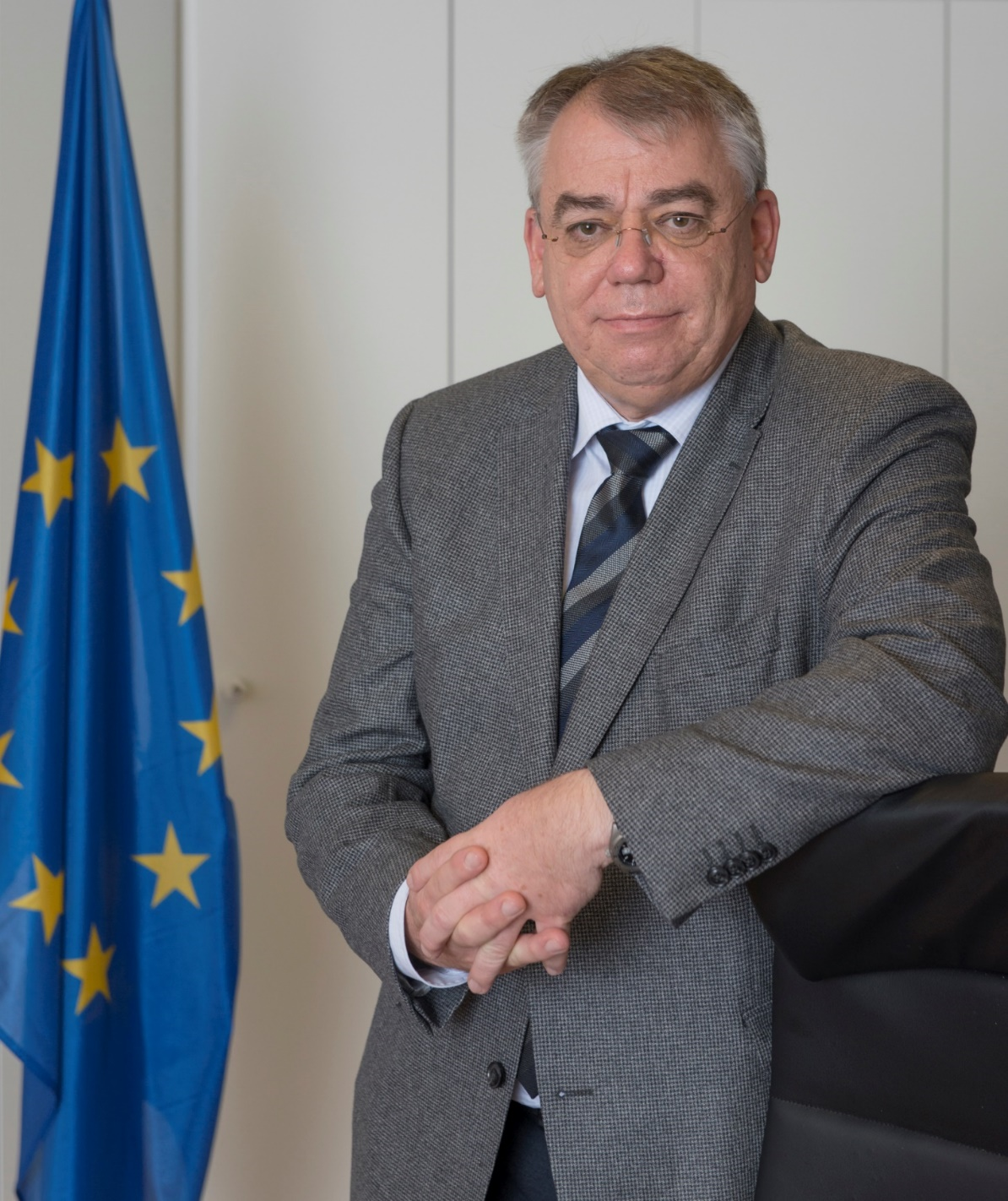
Dear reader,
In 2021, the COVID‑19 pandemic continued to weigh heavily on the European Union and its Member States.
In these difficult times, the EU is providing financial assistance on an unprecedented scale. Apart from the traditional budgetary resources agreed as part of the 2021-2027 multiannual financial framework (MFF), the EU launched the ‘NextGenerationEU’ (NGEU) initiative, a recovery package of supplementary funds based on debt securities.
Against this backdrop, we adopted a new strategy in January for 2021-2025, under which we will focus on three strategic goals. These will guide our efforts in auditing the EU’s finances over the coming years, making the necessary changes to our organisation and using our resources effectively and efficiently.
This activity report gives an overview of our work in 2021, which was the first implementation year for our new strategy. In addition, it provides information on our management, staff, audit support and finances.
Despite the ongoing pandemic, we maintained business continuity throughout the year and continuously adapted to changing working conditions.
In 2021, we published all our annual reports within the official deadlines. We also published 32 special reports and reviews, while keeping delays within reasonable limits.
The EU citizens, and our institutional stakeholders and partners at both EU and Member State level, can continue to count on us to provide them with independent, objective reports on key issues for the future of the EU, highlighting what works well, drawing attention to what does not and recommending changes.
We stand in solidarity with Ukraine. We have strongly condemned the Russian invasion of Ukraine and organised humanitarian help for the victims of the Russian aggression. These are dark times for Europe. Now more than ever, the EU needs to show unity.
We hope you find the information in this year’s Activity Report useful.
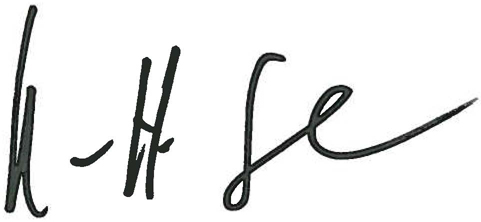
Klaus-Heiner Lehne
President
2021 at a glance

Our activities
Work during COVID‑19
In 2021, we continued to work within the confines of COVID‑related travel and public health restrictions. Our ability to carry out on-the-spot audits was still significantly restricted. We carried on transforming the way we work and adjusting to the new situation.
Our staff managed to continuously adapt to changing working conditions and quickly learned new tools. It became clear that we could make rapid changes to our working methods when needed, while continuing to provide an effective public audit service in the EU.
We managed to deliver timely audit reports, opinions and reviews. We reached meaningful conclusions and made relevant recommendations, sometimes having worked entirely virtually. In the future, we will strive to successfully apply the experience of the past two years and enhance the added value and efficiency of our on-the-spot visits by combining them with virtual work.
Our new strategy for 2021-2025
For many years, we have used multiannual strategies to chart a long-term course for our audit work, promote organisational change for continuous improvement and remain at the forefront of development in public-sector auditing.
At the end of 2021, we completed the first year of our new strategy for 2021-2025. Our strategic goals for this five-year period are to improve accountability, transparency and audit arrangements across all types of EU action; target our audits at the areas and topics where we can add most value; and provide strong audit assurance, in a challenging and changing environment.
To put our strategy into practice, we agreed on implementation measures for each goal and objective, assigned responsibilities, and set deadlines. This year we have made good progress in several actions, notably:
- reviewing our annual report and our approach to the underlying statement of assurance audit;
- drafting a strategic audit approach for the ‘NextGenerationEU’ (NGEU) initiative, including the Recovery and Resilience Facility (RRF);
- drawing up a fraud action plan;
- reviewing our work programming system;
- setting relevant performance indicators to monitor the implementation of our strategy; and
- formulating a new communication strategy.
Auditing the performance and regularity of EU actions
Our audits provide EU citizens and policymakers with independent, objective reports on key issues for the future of the EU, highlighting what works well and drawing attention to what does not.
Our performance audits address the effectiveness, efficiency and economy of EU policies and programmes. They focus on topics reflecting the issues the EU is facing, such as:
- the sustainable and environmentally-friendly use of natural resources;
- growth and inclusion;
- the challenges of migration and global development;
- the single market and the banking union; and
- ensuring that the European Union is accountable and efficient.
These audits aim to help the EU to better meet its policy objectives.
Our financial and compliance audits for the EU budget and the budgets of the European Development Funds (EDFs) include our Statement of Assurance on the reliability of the annual accounts and the legality and regularity of the underlying transactions.
We may also undertake selected compliance audits to examine the state of the EU’s budgetary accounting and financial management, or to assess whether the management and control systems for collecting and spending EU funds comply with the applicable EU and national rules.
Lastly, we are the external auditor for a number of EU agencies, decentralised bodies and Joint Undertakings, and the European Schools.
We carry out all our audits in line with internationally accepted public-sector auditing standards.
Work programme
Our 2022+ work programme, published in December 2021, highlights our audit priorities for the coming years and gives details of the 79 special reports and reviews we intend to publish from 2022 onwards.
More than two thirds of the new 2022 audit tasks are strongly aligned with directions set in our strategy for 2021-2025, notably to target areas and topics where we can add most value. Our four strategic areas are: the Union’s economic competitiveness; resilience to threats to the Union’s security, and respect for the European values of freedom, democracy and the rule of law; climate change, the environment and natural resources; and fiscal policies and public finances in the Union. In addition, we plan to publish 16 reports on issues regarding the EU’s response to COVID‑19, such as the procurement of vaccines, and a series of audits on the Recovery and Resilience Facility (‘NextGenerationEU’ (NGEU) initiative).
We prepare our audit work programme independently, but not in isolation. We reach out to our institutional stakeholders and in particular the European Parliament. Since 2015, when we first initiated this dialogue, the number of suggestions by parliamentary committees has risen steadily: from 37 suggestions in 2015 to 164 audit suggestions for the 2022+ work programme. Almost two thirds of these suggestions are fully or partly taken up in ongoing or future work, and some have now been covered in our latest reports. For the first time, we also received eight additional audit ideas submitted by ten Permanent Representations of Member States.

Audit fieldwork
We do most of our audit work on our premises in Luxembourg. Under normal circumstances, our auditors also make a large number of visits to the European Commission – our main auditee – and other EU institutions, as well as to agencies and bodies, national, regional and local authorities in the Member States, EU delegations in non-EU countries, and international organisations that handle EU funds.
We normally also visit recipients of EU funds on the spot, both within the EU and beyond its borders. Through these checks, we follow the audit trail and obtain direct audit evidence from those involved in managing EU policies and programmes and collecting or paying out EU funds, as well as from the beneficiaries. In 2021, we carried out most of these checks virtually.
We strive to adopt our selected audits within 13 months, in line with the target set in the EU’s Financial Regulation.

on-the-spot checks
Our audit teams generally comprise two or three auditors, while our audit visits range in length from a few days to a couple of weeks. Our on-the-spot checks within the EU are generally coordinated in liaison with the supreme audit institutions (SAIs) of the Member States concerned.
For most of 2021, the travel restrictions and public health measures (border closures, quarantine rules, testing requirements, etc.) continued to limit our ability to carry out audit fieldwork.

Therefore, compared to pre-COVID‑19 years, our auditors spent significantly fewer days auditing on the ground. They spent a total of 857 days in Member States and outside the EU compared with 1 190 days in 2020 and 3 605 days in 2019. They also spent 299 days at EU institutions, decentralised agencies and bodies across the EU, Joint Undertakings, international organisations such as the United Nations and the OECD, and private audit firms. The corresponding figures for 2020 and 2019 were 627 and 2 504 days, respectively.
At the same time, we compensated for the limited on-the-spot checks by making increased use of remote auditing and gathering evidence electronically. We used videoconferencing tools and other information technology, such as secure data and document sharing, to interact with our auditees.

Our reports
Our audit reports, reviews and opinions are an essential element of the EU’s accountability chain. They help the European Parliament and the Council to monitor and scrutinise the achievement of the EU’s policy objectives and to hold to account – those responsible for managing the EU budget, particularly in the context of the annual discharge procedure.
Special reports and reviews
In 2021, we published 32 special reports and reviews addressing many of the challenges the EU is facing across the different areas of EU spending and policies. These included climate action, environment, digitalisation, migration, capital markets union and the rule of law, to name but a few. Two of the reports were COVID‑19 related, one concerning the EU’s public health response and the other air passenger rights. We also started to examine the ‘NextGenerationEU’ recovery initiative, in particular the Recovery and Resilience Facility.
In our special reports, we examine whether the objectives of selected EU policies and programmes have been met, whether results have been achieved effectively and efficiently, and whether EU action has added value – i.e. whether it has delivered more than could be achieved with actions at national level alone. In these reports, we also make recommendations, identifying ways to save money, work better, avoid waste or achieve expected policy objectives more effectively.
Our reviews aim to provide scene-setting descriptions and analysis, often from a crosscutting perspective and based on previous audit work or other publicly available information. We may also use them to present our analysis of areas or issues we have not yet audited, or to establish facts about specific topics or problems. In contrast to audits, they do not address evaluative questions or provide assurance.
The following pages provide insights into our work and examples of special reports from 2021 covering different policy areas.
Sustainable use of natural resources
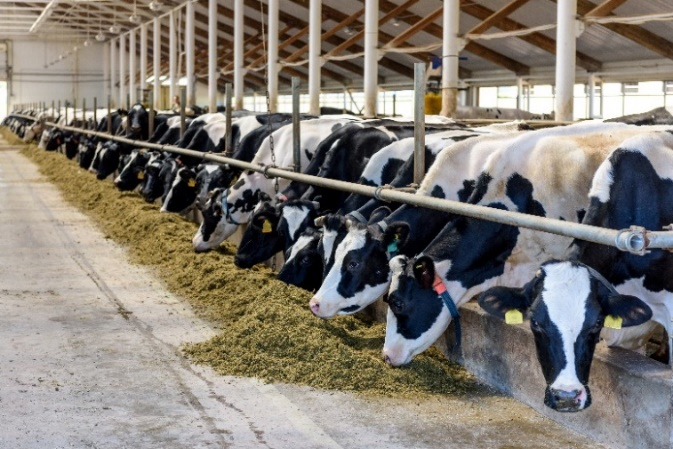
Food production is responsible for 26 % of global greenhouse gas emissions. Agriculture, in particular the livestock sector, is responsible for most of these emissions. Since 2013, climate action has been one of the main objectives of the Common Agricultural Policy – the CAP. The Commission attributed over €100 billion – more than a quarter of the total CAP budget – to mitigating and adapting to climate change during the 2014-2020 period.
We assessed whether the CAP supported climate mitigation practices with the potential to reduce greenhouse gas emissions from agriculture. We also examined whether the CAP incentivised the uptake of effective mitigation practices in the 2014-2020 period better than in 2007-2013.
We found that the €100 billion CAP funding on climate action in 2014-2020 had little impact on agricultural emissions, which have not changed significantly since 2010. Most mitigation measures supported by the CAP have low potential for mitigating climate change. The CAP rarely finances measures with high climate mitigation potential.
We recommended that the Commission take action to ensure that the CAP reduces emissions from agriculture; take steps to reduce emissions from cultivated drained organic soils; and report regularly on the CAP’s contribution to climate mitigation.
Investment for cohesion, growth and inclusion
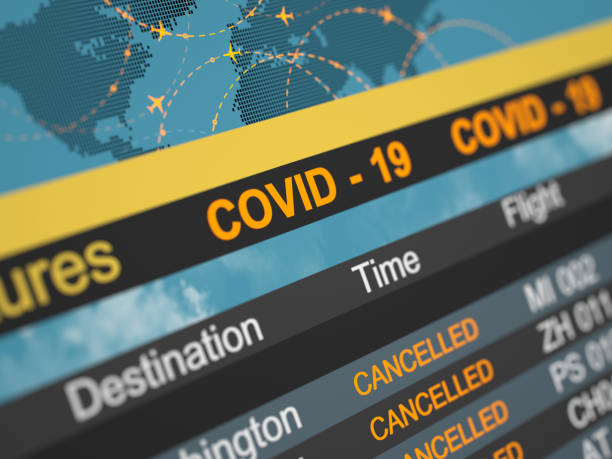
Over the last three decades, there has been a boom in travel in Europe. The EU has developed a harmonised level of protection for passenger rights. The COVID‑19 crisis has had a major impact on many sectors of the economy, the travel and tourism sectors being amongst the first directly hit. This resulted in numerous flight cancellations, followed by requests for reimbursement by passengers affected. Airlines and package organisers faced serious liquidity problems, and Member States provided them with unprecedented levels of support.
We assessed how the COVID‑19 crisis affected air passenger rights and whether the rights of access to information and the right to reimbursement for air passengers were safeguarded. We also examined how Member States supported airlines with State aid and whether this aid was linked to the protection of passenger rights.
We found that the COVID‑19 crisis highlighted the fact that air passengers were not fully informed about their rights, and that there was a risk that they would consequently lose money to which they were entitled. We also found that the Commission’s temporary State aid framework facilitated the provision of unprecedented levels of State aid by Member States to airlines and package organisers, amounting to €34.7 billion. While the Commission clarified that Member States could link the protection of passenger rights to State aid, this was not the case for aid to airlines. Furthermore, we found that the Commission tried to protect the rights of air passengers but had limited enforcement powers.
We recommended that the Commission take action to ensure better protection of, and information on, air passenger rights; work with Member States to address ways of improving coordination between them and take further action to link State aid to airlines more closely to passenger reimbursement; take action to improve tools and legislation for safeguarding air passenger rights; and consider the relevance of the recommendations for other modes of transport.
External action, security and justice
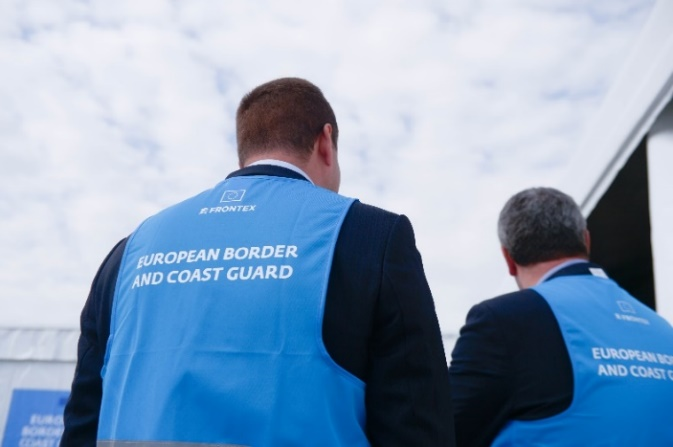
The Schengen Convention created a single area allowing movement between signatory countries without internal border checks. Surveillance and control of its external borders are essential for facilitating the free movement of people and goods within the area, while seeking to guarantee internal security and prevent potential threats at the borders. In 2016, Frontex became the European Border and Coast Guard Agency and was empowered to facilitate European integrated border management at the EU’s external border, where Member States retain responsibility.
In 2019, its powers were further enhanced to move from a support and coordination role to an operational role. This involved an exponential increase in resources, introducing a standing corps of 10 000 operational staff by 2027 with an average budget of €900 million per year.
We assessed whether Frontex carried out its primary activities effectively to contribute to implementing European integrated border management. We also examined how prepared it was to fulfil its new expanded mandate.
We found that Frontex’s support for Member States/Schengen associated countries in fighting illegal immigration and cross-border crime was not sufficiently effective. We also found that Frontex had not fully implemented its 2016 mandate and highlighted several risks related to Frontex’s 2019 mandate.
We recommended improving the information exchange framework and the European situational picture; updating and implementing the common integrated risk analysis model and securing access to other sources of information; developing the potential of the vulnerability assessment; improving Frontex’s operational response; and addressing the challenges posed by Frontex’s new mandate.
Regulation of markets and competitive economy

Money laundering is the practice of ‘legitimising’ the proceeds of crime by filtering them into the regular economy to disguise their illegal origin. Within Europe, Europol estimates the value of suspicious transactions in the hundreds of billions of euros, at an equivalent of 1.3 % of the EU’s gross domestic product.
The EU adopted its first anti-money laundering directive in 1991 to counter threats to the internal market from money laundering, and, subsequently, to prevent terrorist financing. It was most recently updated in 2018. The anti-money laundering directive relies on implementation at national level for effect. A number of EU bodies also play a part, such as the Commission (policy development, transposition monitoring), the European Banking Authority (analysis, investigation of breaches of Union law, standard setting) and the European Central Bank (prudential supervision of banks, including money laundering and terrorist financing risk).
We assessed whether EU action in the fight against money laundering in the banking sector was well implemented.
We found institutional fragmentation and poor co-ordination overall at EU level in terms of steps to prevent money laundering and terrorist financing, and action where risks were identified. In practice, actions to counter money laundering and the financing of terrorism are still supervised at national level and the EU oversight framework is insufficient to ensure a level playing field.
We recommended in particular prioritising the risk of money laundering and terrorist financing more clearly; establishing a framework for reporting breaches of Union law; and issuing guidelines to facilitate standardised information exchanges between national and EU-level supervisors.
Financing and administering the Union
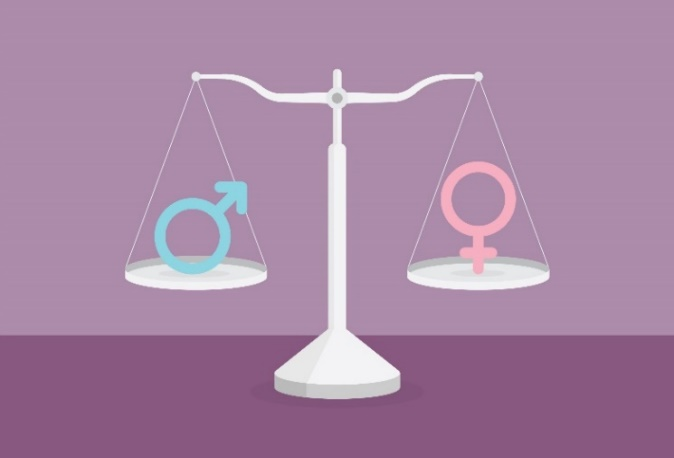
Special report 10/2021: Gender mainstreaming in the EU budget – time to turn words into action
Gender equality is one of the European Union’s fundamental values. Gender mainstreaming is a means of achieving gender equality by actively promoting equality between women and men at all stages and in all areas of policy-making and implementation. The Commission has committed to implementing gender mainstreaming, and the European Parliament and the Council have emphasised the need for the EU to deliver on its high-level gender‑mainstreaming commitments.
The Commission describes progress towards achieving full gender equality as ‘slow’. The European Parliament recognises that the pandemic has exacerbated existing structural gender inequalities, and has argued in favour of using gender mainstreaming and gender budgeting in the COVID‑19 recovery response, as well as applying lessons learned about the detrimental effects of previous economic crises on gender equality.
We assessed whether gender mainstreaming had been applied in the EU budget to promote equality between women and men from 2014 onwards. In particular, we examined whether the Commission’s framework for supporting gender mainstreaming was appropriate, whether the EU’s budget cycle took gender equality into account and whether gender equality had been incorporated into five selected EU funding programmes.
We found that the Commission had not yet lived up to its commitment to gender mainstreaming in the EU budget. Its strategy for gender equality did not sufficiently promote the use of gender mainstreaming and its institutional framework did not yet fully support gender mainstreaming. In addition, the EU’s budget cycle did not take adequate account of gender equality and the Commission paid little attention to the gender analysis of the policies and programmes we examined.
We recommended in particular strengthening the institutional framework for supporting gender mainstreaming; carrying out gender analyses of needs and impacts for EU funding programmes and instruments; using gender-related objectives and indicators to monitor progress; developing a system for tracking funds supporting gender equality and reporting annually on the results achieved in terms of gender equality.
Annual and specific annual reports
Annual reports mainly present the results of our Statement of Assurance on the European Union budget and the budget of the European Development Funds (EDFs), but also cover aspects of performance and budgetary and financial management.
Specific annual reports present our annual audit work on the EU agencies and other Union bodies, Joint Undertakings, and the European Schools.
We also publish a report on contingent liabilities arising from the activities undertaken by the Single Resolution Board (SRB).
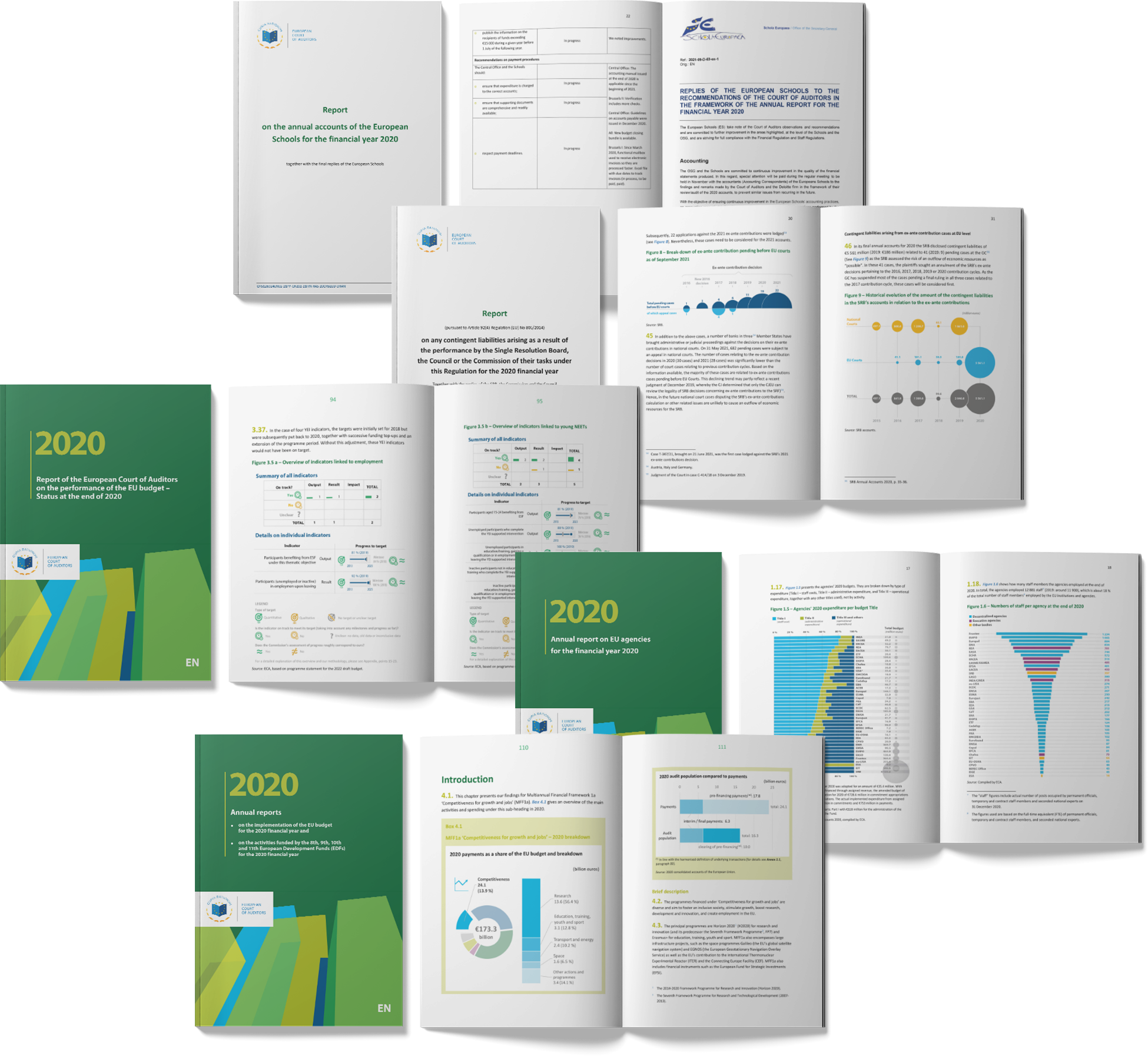
Annual report on the EU budget for the financial year 2020
Every year, we audit EU revenue and expenditure to examine whether the annual accounts are reliable and whether the income and expenditure transactions underlying the accounts comply with the financial rules at EU and Member State level.
In addition, we specifically assess each major area of the EU budget, based on the (sub‑) headings of the multiannual financial framework (MFF). We also analyse why and where errors have occurred, make recommendations for improvement, and examine whether and how our previous recommendations have been put into practice.
This extensive work forms the basis for our Statement of Assurance, which we are required to provide to the European Parliament and the Council in accordance with our mandate under the Treaty on the Functioning of the European Union (TFEU).
clean opinion on accounts and revenue
For the financial year 2020, we provided a ‘clean opinion’ on the accounts and on the EU’s revenue.
adverse opinion on expenditure
In 2020, EU spending was €173.3 billion, the equivalent of 1.1 % of the combined gross national incomes of the EU‑27 and the United Kingdom.
Our auditors tested a sample of 728 payments made to beneficiaries across all spending areas, out of a total audit population worth around €148 billion. This means we assessed various cases where EU money had been used to provide support for key infrastructure projects, SMEs, research organisations, farmers, students in EU Member States, and beneficiaries in non-EU countries.
For the financial year 2020, we issued an ‘adverse opinion’ on the EU’s expenditure.
For the financial year 2020, we estimated the level of error for expenditure as a whole to be between 1.8 % and 3.6 %. The mid-point of this range, known as the ‘most likely error’, is 2.7 %, the same as for the financial year 2019.

Note: We use standard statistical techniques to estimate the level of error. We are 95 % confident that the level of error for the population lies in the range between the lower and upper error limits (for more details, see Chapter 1, Annex 1.1 to the 2020 annual report).
For the financial year 2020, high-risk expenditure accounted for 59 % of our audit population, compared with 53 % last year. The estimated level of error for high-risk expenditure was 4.0 %, compared with 4.9 % for the financial year 2019.
EU spending is characterised by two types of expenditure involving distinct patterns of risk:
- Low-risk, entitlement payments: Based on beneficiaries meeting certain (less complex) conditions, these include student and research fellowships (under ‘Competitiveness’), direct aid for farmers (‘Natural resources’) and salaries and pensions for EU staff (‘Administration’).
- High-risk, cost reimbursements: The EU reimburses eligible costs for eligible activities (involving more complex rules). These include research projects (under ‘Competitiveness’), investment in regional and rural development (‘Cohesion’ and ‘Natural resources’) and development aid projects (‘Global Europe’).
For the financial year 2020, ‘Competitiveness for growth and jobs’ was the most error-prone MFF sub-heading, followed by ‘Economic, social and territorial cohesion’.

Note: The estimated level of error is based on quantifiable errors we identified through our work, notably by testing a sample of transactions. We use standard statistical techniques to select this sample and estimate the level of error (see Chapter 1, Annex 1.1 to the 2020 annual report).
As the EU’s external auditor, we do not have a mandate to investigate cases of suspected fraud. Therefore, our audits are not specifically designed to detect fraud. Nevertheless, our auditors regularly identify cases where we suspect that fraudulent activity may have taken place.
We reported 15 cases of suspected fraud to OLAF following identification in the course of our audit work in 2021. We reported six such cases in 2020. Our annual report on the EU budget provides additional information on the nature of these suspected fraud cases and on the subsequent financial recoveries recommended by OLAF.
In June 2021, we also started collaborating with the European Public Prosecutor’s Office (EPPO) in line with the administrative arrangement signed on 3 September 2021. We reported two cases to the EPPO that we had identified in the course of our audit work in 2021.
Annual report on performance
We split our annual report into two separate parts as a two-year pilot project, which started with the annual report for the financial year 2019. The second part of the annual report covers the performance of spending programmes under the EU budget.
We examined whether and how the Commission and the co-legislators used the lessons learnt from previous multiannual financial framework (MFF) periods to improve the design and performance of spending programmes for the 2021-2027 period.
We also examined the results achieved by EU programmes under the 2014-2020 MFF. Our purpose was to establish how much relevant performance information was available and, based on that information, to assess how well EU spending programmes actually performed.
In this context, we reviewed the Annual Management and Performance Report (AMPR), which is the Commission’s main high-level performance report on the EU budget.
We also followed up the audit recommendations we made in special reports published in 2017.
Annual report on the European Development Funds for the financial year 2020
clean opinion on accounts and revenue; adverse opinion on expenditure

The European Development Funds (EDFs), launched in 1959, were the EU’s main instruments for providing development cooperation aid. They aim to overcome poverty and promote sustainable development and the integration of African, Caribbean and Pacific countries (ACP) and overseas countries and territories (OCTs) into the world economy. They are funded by the EU Member States and managed outside the EU budget by the European Commission and the European Investment Bank (EIB). They will continue to be implemented and reported on separately until their closure.
For the 2021‐2027 multiannual financial framework, development cooperation aid to the ACP countries and OCTs is funded by the EU budget.
As in previous years, we issued a ‘clean opinion’ both on the EDF accounts and on revenue but an ‘adverse opinion’ on EDF expenditure for the financial year 2020. Our estimated level of error for expenditure is 3.8 % (3.5 % for the financial year 2019).
Specific annual reports on EU agencies
The EU agencies are distinct legal entities set up to carry out specific technical, scientific or managerial tasks that help the EU institutions to design and implement policies. In total, there are 43 agencies.

Note: ELA and EPPO were not audited in 2020 as they were not yet financially autonomous. The map also includes the newest agency HaDEA (European Health and Digital Executive Agency), established on 1 April 2021. At the same time, the Chafea ceased to exist, and INEA and EASME were renamed CINEA (European Climate, Infrastructure and Environment Executive Agency) and EISME (European Innovation Council and SME Executive Agency), respectively.In addition, GSA was renamed EUSPA (European Union Agency for the Space Programme) on 12 May 2021.
In the financial year 2020, the total budget of all agencies under our mandate (excluding the SRB) was €3.7 billion, equivalent to 2.2 % of the 2020 EU general budget. The corresponding figures for the financial year 2019 were €3.3 billion and 2.2 %.
Overall, our audit of the agencies confirmed the positive results reported in previous years. We issued ‘clean opinions’ on the 41 agencies’ accounts and on the revenues. We signed off the payments underlying all the agencies’ accounts, except for the Agency for the Cooperation of Energy Regulators (ACER), the Agency for the Operational Management of Large-Scale IT Systems in the Area of Freedom, Security and Justice (eu-LISA), and the Agency for Cybersecurity (ENISA). For these three agencies, we issued qualified opinions, mainly due to irregularities in procurement procedures and to gaps in the delegation procedure for authorising budgetary operations.
Specific annual report on Joint Undertakings for the financial year 2020
Joint Undertakings (JUs) are the EU’s public-private partnerships with industry, research groups and Member States, and play an important role in supporting market-driven projects in strategic areas of research and innovation, and thus in implementing EU research policy.
Eight of the nine JUs implement specific research and innovation actions under the Horizon 2020 programme in the areas of transport, energy, health, bio-based industries, electronic components and systems, and digital research. The ninth JU, ‘Fusion for Energy’, is funded by Euratom and is responsible for providing Europe’s contribution to the International Thermonuclear Experimental Reactor (ITER).
In the financial year 2020, we issued ‘clean opinions’ on the accounts, revenue and payments for all JUs.
However, as in previous years, our audit opinion on the 2020 annual accounts of the ‘Fusion for Energy’ (F4E) JU was accompanied by an ‘emphasis of matter’, mainly to draw attention to the risk of further cost increases and delays in implementation of the ITER project.
Specific annual reports on European schools and contingent liabilities of the Single Resolution Board
We issued our yearly report on the review of the consolidated annual accounts of the 13 European schools for the financial year 2020. While our review did not reveal material errors in the accounts, we were still unable to confirm that the Schools’ financial management was fully compliant with their Financial Regulation and Staff Regulations.
We also report annually on the contingent liabilities of the Single Resolution Board (SRB), the Council and the Commission, arising from the performance of their tasks under the Single Resolution Mechanism Regulation. In our report on the financial year 2020, we conclude that the SRB and the Commission made a fair effort to disclose contingent liabilities where they had reason to do so.
The publication of our annual reports also marks the start of the discharge procedure, during which the European Parliament decides – upon a recommendation from the Council – whether the Commission and other bodies have managed the EU budget satisfactorily. If they have, it grants them discharge.
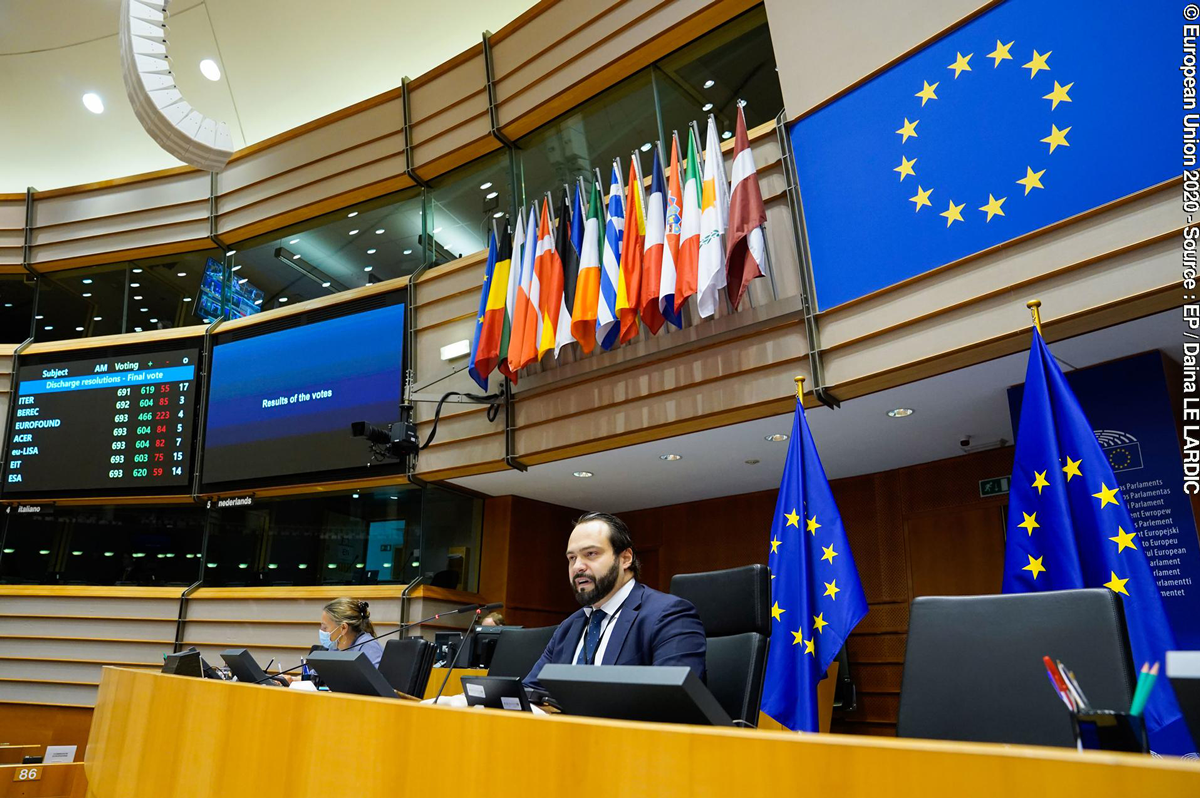
In October 2021, we started presenting our 2020 annual reports to the European Parliament’s Committee on Budgetary Control and to the Council’s Budget Committee. Subsequently, we also presented them to the European Parliament in its plenary session and to the Economic and Financial Affairs Council.
Furthermore, over the course of 2021, we presented our annual reports to the national parliaments and governments of 20 Member States.
Opinions
As the EU’s independent external auditor, we contribute to improving financial management by issuing opinions on the Commission’s proposals for new or revised legislation. Where these legislative proposals entail a significant financial impact, EU law requires us to be consulted. Other institutions can also ask us to issue opinions on other specific issues. All our opinions are submitted to the European Parliament and the Council.
In 2021, we published two such opinions. The first one concerns a legislative proposal establishing the Brexit Adjustment Reserve. The second one relates to amendments of existing rules aimed at enhancing predictability for Member States and clarifying procedures for dispute resolution when making own resources available.
Other communication products
Audit previews
Our audit previews provide information on ongoing (performance) audit tasks. They are based on the preparatory work undertaken and are intended as a source of information for those interested in the policy and/or programme being audited.
In 2021, we issued six audit previews (14 in 2020).
Journal
Each edition of the ECA Journal features articles on a specific theme, mostly from an audit perspective, from contributors working within and outside the EU institutions.
In 2021, we issued three editions, addressing 'Strategy development in a rapidly changing world', 'The new CAP creating new horizons' and 'Disasters and crisis management'.
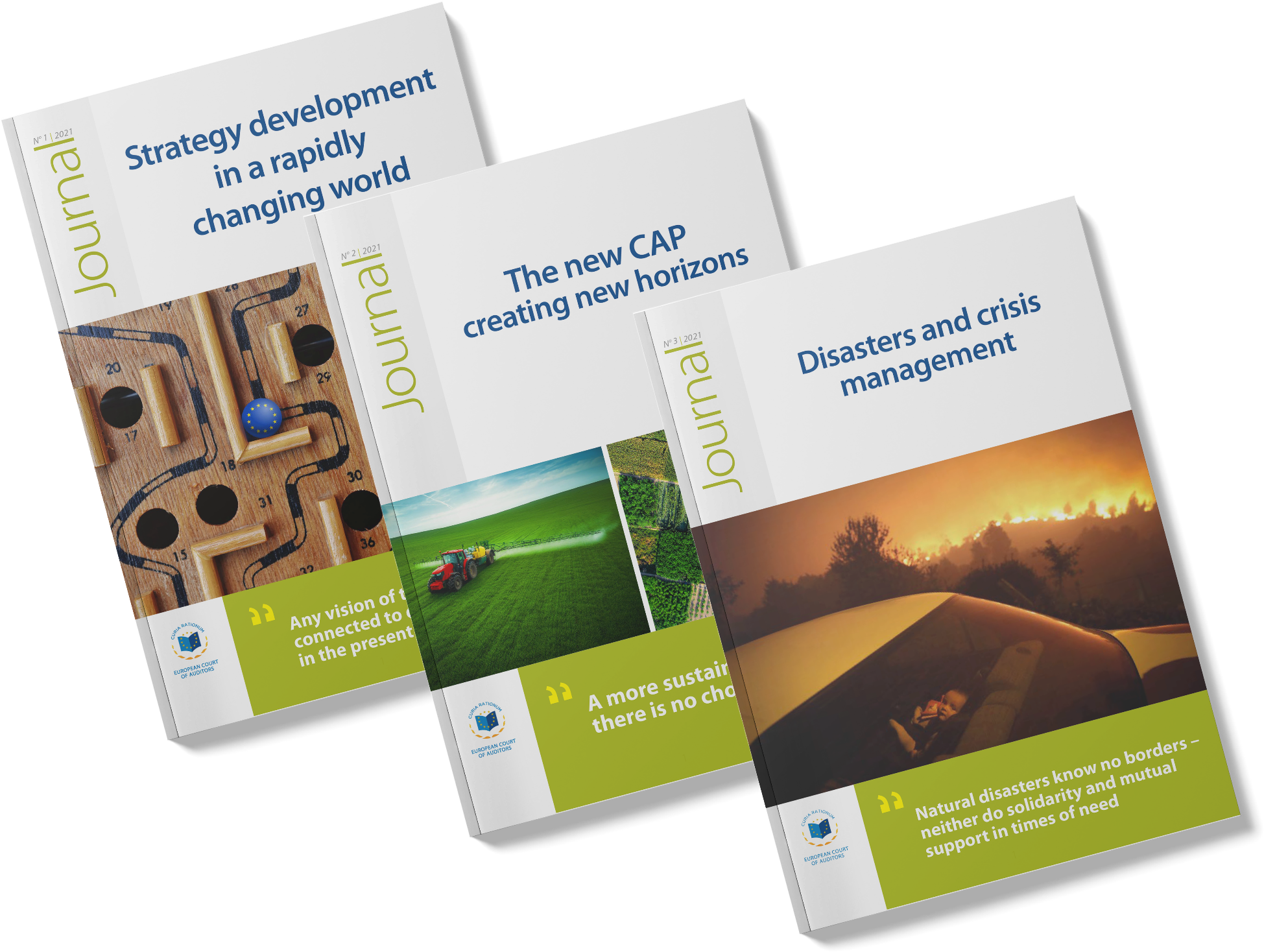
Conferences and webinars
In 2021, we also (co-)organised a number of conferences and webinars. Most of these events were still organised remotely and were open to interested parties.
Below are five examples.
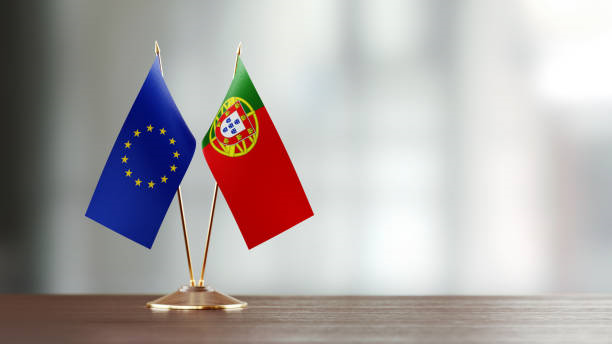
During the Portuguese Presidency of the EU, the Portuguese Tribunal de Contas and the ECA organised a conference on ‘European funds – management control and accountability’, in Lisbon on 21 and 22 June 2021. It was the first such in‑person meeting since the start of the COVID‑19 pandemic in early 2020. Delegations of the two supreme audit institutions met with high-level representatives of Portugal and discussed the following topics: priorities and challenges underlying the multiannual financial framework and the Recovery and Resilience Plan; European funding and the climate transition; digital future; sustainability of public finances; and management and control of European Funds.
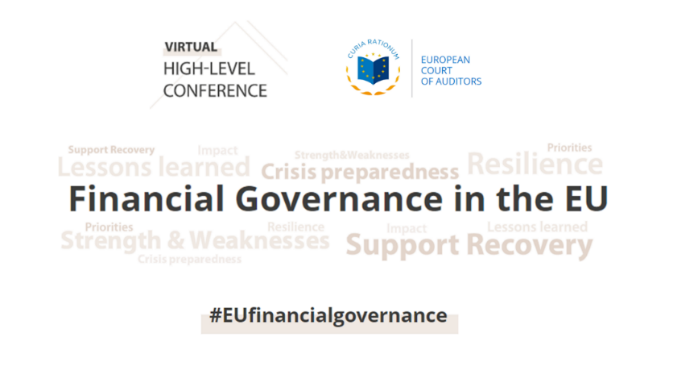
On 9 July 2021, the ECA hosted a virtual high–level conference on financial governance in the EU. Its aim was to foster discussion about the resilience of the EU financial sector, and its readiness to face the next crisis and to support the economic recovery. Mr Valdis Dombrovskis, the Executive Vice-President of the Commission, opened the conference, which was attended by distinguished speakers and panellists from the EU and international institutions, Member States, financial sector and academia.
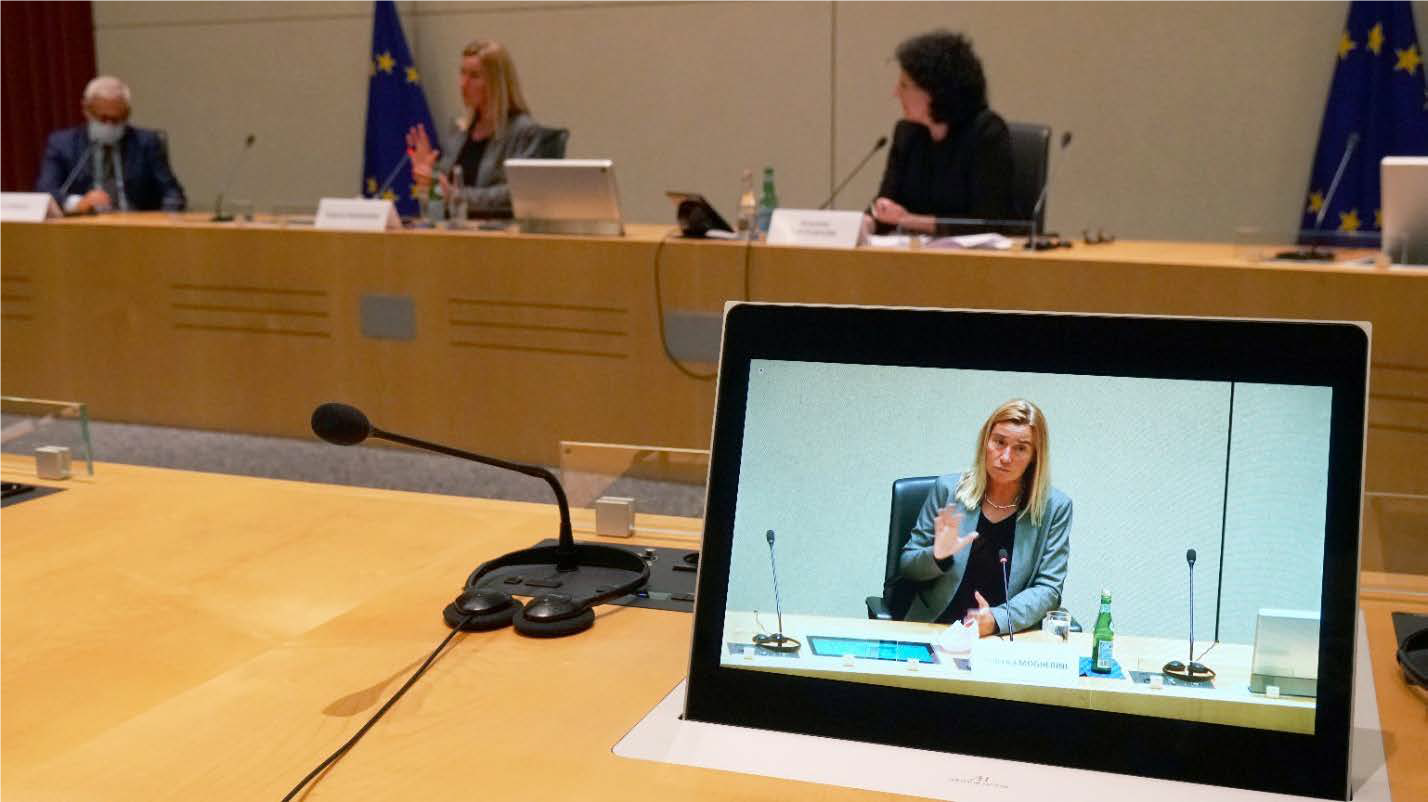
On 6 October 2021, the ECA organised a hybrid workshop to reflect on the Conference on the Future of Europe with Federica Mogherini, Rector of the College of Europe and former High Representative of the EU for Foreign Affairs and Vice‑President of the European Commission. She highlighted several aspects of the pandemic, which she felt would shape discussions on the future of Europe. ECA staff were invited to express their ideas about Europe’s future from their perspective not only as auditors, but also as EU citizens.

On 1 October 2021, the 8th International Financial Markets Conference titled ‘Developing Capital Markets in the Baltics’ took place in Vilnius. The conference built upon the recommendations and conclusions set in Special report 25/2020: Capital Markets Union – Slow start towards an ambitious goal. Many high-level speakers, including Ms Ingrida Šimonytė, Prime Minister of the Republic of Lithuania and Werner Hoyer, President of the European Investment Bank, gathered to debate how best to develop a single market for capital – providing citizens, businesses and governments with effective investment and financing opportunities.
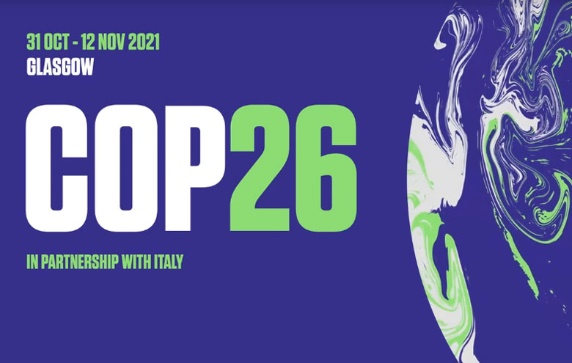
At the 2021 UN Climate Change Conference in Glasgow - the COP26 summit - the ECA co-hosted two side events: the ECA contributed through a discussion organised with EUROSAI on external auditors’ contributions to translating climate ambition into delivery, and co‑hosted, together with the European Investment Bank (EIB), an event on directing finance towards climate change adaptation. ECA Member Eva Lindström presented the results of ECA’s audit on sustainable finance and EIB Vice-President Ambroise Fayolle presented the EIB’s new Adaptation Plan.
Innovation and digital audit
The ECA stepped up its efforts to make the best use of modern technology and new techniques in audit to deliver more and better information for the accountability process. The Court also made increased use of technology and data in audit a key priority in its 2021‑2025 strategy.
In July 2021, the Court adopted its development plan for increased use of data and technology in audit. The plan sets goals and objectives for the next five years to make better use of technology in support of ECA audit objectives.
Following the adoption of this plan, the ECA created a new team, D.A.T.A. (Data and Technology for Audit). DATA is a centralised team of experts – mainly data scientists and IT auditors – that supports the audit teams and is responsible for implementing the development plan across the Court.
Over the course of 2021, we built the team through both external and internal recruitment, notably by including data scientists from ECALab, the ECA’s innovation lab. This is the next step in expanding on previous ECALab pilots and services.
While our focus has shifted towards delivering tangible solutions to our auditors on a larger scale, the need for research and innovation remains significant. Through ECALab and the DATA team, we have continued to explore technologies such as text mining, process mining and artificial intelligence. For example, we established a Robotic Process Automation (RPA) service to provide centralised and automated audit evidence collection, improving the speed and reliability of downloading supporting documents. RPA was used in 17 audit tasks.
We have been actively involved in the Emerging technology group of the Interinstitutional Committee for Digital Transformation, working on introducing technologies such as artificial intelligence, augmented reality or blockchain in EU institutions. We decided in September 2021, to focus on working with EU institutions and bodies to develop an approach to leveraging distributed ledger technologies to serve our specific needs.
ECALab also continued to foster international knowledge sharing through TiNA, a network launched by the ECA that brings together professionals from Member State SAIs to share and collaborate on ‘Technology and innovation for audit’.
Institutional relations
We work closely with the European Parliament, the Council, national parliaments and Member State governments, as the impact of our work depends largely on the use they make of our audit findings and recommendations.
European Parliament
In March 2021, the Conference of Committee Chairs (CCC) invited the ECA President for an exchange of views on our 2021-2025 strategy and 2021+ and 2022+ work programmes.
ECA Members and audit teams are regularly invited to meetings of the EP committees and bodies, particularly the Budgetary Control Committee (CONT), to present the results of our work.
For most of 2021, the EP continued to organise its plenary and committee meetings in hybrid form. Despite the pandemic-related restrictions, the ECA made 147 appearances before the EP, the highest ever annual number.
Overall, in 2021, our Members presented 19 special reports and four reviews to CONT. The ECA’s reporting Members also participated in 13 CONT hearings on the 2020 discharge and five hearings on the 2019 discharge.
In addition, the Members gave 46 presentations on special reports, reviews, and opinions to 17 other EP committees. Some of these meetings took place jointly when several committees were interested in the same report.
Council of the European Union
As a rule, the Council’s preparatory bodies deal with all our special reports soon after publication, but not necessarily all reviews and opinions. In 2021, we presented 28 special reports and one opinion to two Council committees (Economic and Financial Committee and Financial Services Committee) and 18 Council working parties.
In 2021, ECA President Klaus-Heiner Lehne and other ECA Members also participated in six meetings with Permanent Representatives to the European Union. Furthermore, the Budget Committee of the Council invited the relevant ECA management to present our 2021‑2025 strategy, 2021+ and 2022+ work programmes, digital strategy for auditing the agencies, and draft budget for 2022.
Portugal: January – June 2021
Slovenia: July – December 2021
Most of the meetings of the Council of the EU were held remotely. Nevertheless, ECA Members participated in some physical meetings, for example:
- In April 2021, ECA Member João Figueiredo presented the ECA’s key messages related to our work concerning the environment at an informal Council meeting of EU environment ministers in Lisbon.
- In November 2021, ECA President Klaus-Heiner Lehne and ECA Member Tony Murphy met with the Slovenian Minister of Finance in his capacity as ECOFIN President, before the presentation of the 2020 annual report to the EU finance ministers.

National parliaments and Member State governments
In 2021, despite the restrictions imposed by the ongoing pandemic, we presented our work at 97 meetings with national parliaments in 21 Member States. These meetings mainly took place in person (80 physical and 17 virtual meetings).
Our Members and management presented our work at 107 meetings with Member State governments and government bodies in 20 Member States in 2021. These meetings mainly took place in person (81 physical and 26 virtual meetings).

European Commission
ECA Members and Commissioners have regular bilateral contact over planned and ongoing audit tasks.
For years, it has also been a well-established practice for our Members to hold an annual meeting with their counterparts at the European Commission.
In 2021, however, due to the ongoing COVID‑19 pandemic, they agreed to postpone this yearly meeting.
Cooperation with other supreme audit institutions
Contact Committee of the EU supreme audit institutions
Our cooperation with the supreme audit institutions (SAIs) of the 27 Member States mainly takes place within the framework of the Contact Committee of the EU Supreme Audit Institutions. This forum facilitates dialogue and exchange between the SAIs of EU Member States and the European Court of Auditors.
In 2021, we initiated – together with the SAIs of Belgium and Germany – a cooperation activity on the implementation of ‘NextGenerationEU’, notably on auditing the implementation of the Recovery and Resilience Facility and the National Recovery and Resilience plans at EU and national level. Our initiative was very well received, as auditors and audit managers of 18 EU SAIs made use of the possibility to regularly meet and discuss pertinent issues and audit approaches.
Under normal circumstances, the Contact Committee meets annually. However, due to COVID‑19, the annual meeting scheduled to take place in October 2020 was postponed to 2022. The ECA organised an interim online meeting, which was held in November 2021.
In July 2021, on behalf of the Contact Committee, we published, an Audit Compendium on the challenges related to the COVID‑19 pandemic. The report provides information on the impact of and response to the pandemic at national and supranational level, and gives an overview of the pertinent audit work carried out and published in 2020 by the EU SAIs.
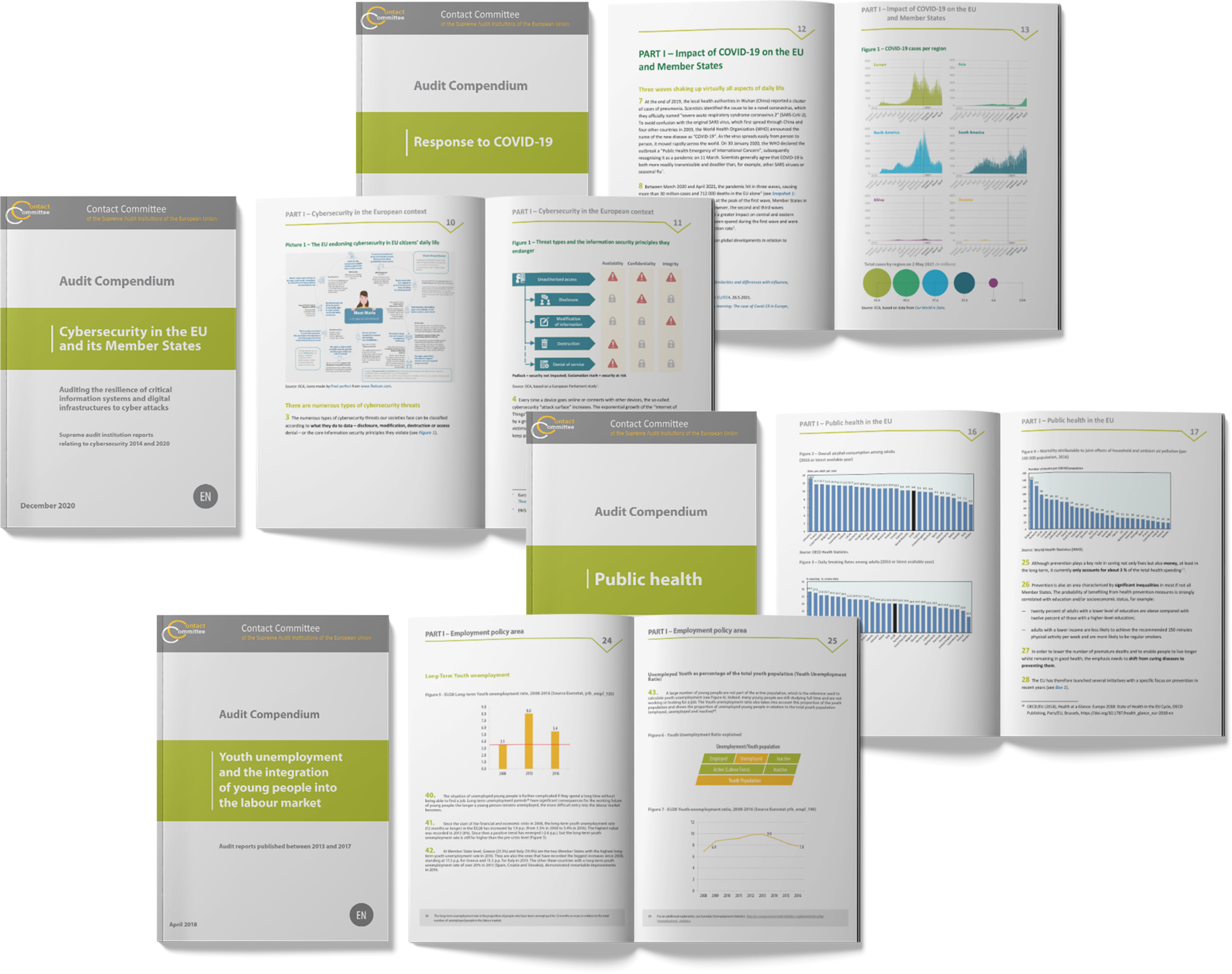
This was the fourth edition of the Audit Compendium, which has become an annual publication of the Contact Committee.
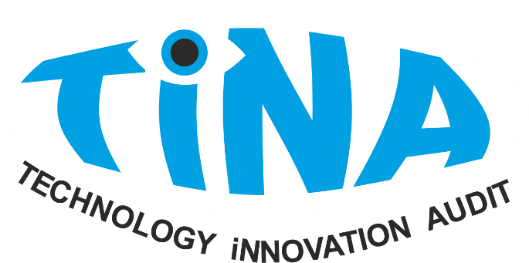
The knowledge‐sharing and collaboration platform with other EU SAIs on Technology and Innovation for Audit (TINA), which we launched in November 2020, now has 498 registered users from 26 EU SAIs, the Commission and the ECA.
The network has organized 12 live online events on subjects such as robotic process automation, process mining, blockchain and cybersecurity, with an average of 60 participants per session.
SAIs of EU candidate and potential candidate countries
We also support the SAIs of EU candidate and potential candidate countries (Albania, Bosnia and Herzegovina, Kosovo[*], Montenegro, North Macedonia, Serbia and Turkey).
In 2021, we supported SIGMA (Support for Improvement in Governance and Management), a joint initiative of the OECD and the European Union, in the organisation of workshops on the audit of public expenditure related to COVID‑19.
[*] This designation is without prejudice to positions on status, and is in line with UNSCR 1244/1999 and the ICJ Opinion on the Kosovo Declaration of Independence.
INTOSAI
In 2021, we continued our active involvement in the activities of the International Organisation of Supreme Audit Institutions (INTOSAI). As Vice-Chair of the Professional Standards Committee (PSC), we provided input to the INTOSAI Task Force on Strategic Planning and actively collaborated with the other Goal Chairs. In November 2021, we attended the virtual INTOSAI governing board meeting.
We also participated in the PSC subcommittees and the activities and projects of other INTOSAI working bodies, notably on environmental auditing, Big Data, financial modernisation and regulatory reform, as well as evaluation of public policies and programmes. We also participated in the task force on INTOSAI Auditor Professionalisation and the INTOSAI Development Initiative.
EUROSAI
We were also actively involved in the activities of the European Organisation of Supreme Audit Institutions (EUROSAI), the European regional group of INTOSAI, in particular its working groups on environmental auditing, information technologies, the audit of funds allocated to disasters and catastrophes, and the task force on audit and ethics.
In 2021, we pursued the work of the project group on ‘Preparing for future risks and climate crisis: Time for audit to take a long-term view?’ (co-led with the UK National Audit Office) in the context of the ‘Forward thinking and emerging issues’ portfolio. We also actively contributed to the project group on auditing the response to COVID‑19.
Together with EUROSAI, we organised a side event at COP26 on ‘Translating climate action into delivery’.
Our management
Members
The ECA operates as a collegiate body of Members, one from each Member State. After consulting the European Parliament, the Council appoints each Member once their respective national governments have nominated them. We have no role in the process of nominating or appointing our Members.
Our Members serve a renewable term of six years. They perform their duties in complete independence and in the general interest of the EU. Upon taking office, they give a solemn undertaking to that effect before the European Court of Justice.
In 2021, the Council appointed a new Polish Member, Marek Opioła, to complete the mandate of former Member Janusz Wojciechowski from 1 February 2021. Mr Wojciechowski was appointed EU Commissioner for Agriculture in 2019.
Our Portuguese Member, João Figueiredo, sadly passed away on 29 June 2021. The nomination procedure to complete his mandate was still ongoing at the end of 2021.
The College met on 20 occasions in 2021. Due to the pandemic, most of these meetings took place in hybrid mode, with some Members participating from the Court and others attending remotely. The attendance rate at these meetings was 97 %. Members also participated in chamber and committee meetings (see also Audit chambers and committees).
Once a year, our Members, the Secretary-General and the directors go on a two-day seminar to discuss important issues relating to the ECA’s long-term strategy, work and organisation.
During this year’s ECA Seminar, the Members discussed the following key topics:
- the future of the Statement of Assurance;
- the ‘NextGenerationEU’ instrument;
- the future of the performance report;
- lessons learned from the coronavirus crisis;
- the ECA’s involvement in the Conference on the Future of Europe;
- the ECA’s communication strategy; and
- the 2022+ work programme.
President
The President is in charge of the institution’s strategy, planning and performance management, communication and media relations, institutional liaison, legal matters and internal audit. The President also represents the ECA in its external relations.
Our Members elect one of their number as President for a renewable period of three years. The elected person then assumes the role of first among equals (primus inter pares), chairs the Court’s meetings and ensures that the Court’s decisions are implemented.
Klaus-Heiner Lehne was elected President in September 2016 and re-elected in September 2019.

Note: As at February 2022.
Audit chambers and committees
Members are assigned to one of five audit chambers, where most of our audit reports, reviews and opinions are adopted. Audit chambers allocate their tasks among their Members. Each Member is accountable to the chamber, and to the Court, for their own audit tasks. Professional auditors working for the audit chamber directorates carry out the audit work.
The Members for each audit chamber elect a Dean for a renewable period of two years. As of December 2021, the Deans of our five audit chambers were Samo Jereb, Iliana Ivanova, Bettina Jakobsen, Mihails Kozlovs and Tony Murphy.
The Audit Quality Control Committee (AQCC) deals with the ECA’s audit policies, standards and methodology, audit support and development, and audit quality control. It is composed of one Member from each audit chamber and chaired by Jan Gregor.
The Administrative Committee (AC) and, where appropriate, the College of Members, both of which are chaired by the President, take decisions on broader strategic and administrative issues. The Administrative Committee is made up of the President, the Deans of the chambers, the chair of the AQCC, and the Member for Institutional Relations (as of December 2021, Rimantas Šadžius).
In 2021, there were 95 chamber, 12 AC and nine AQCC meetings. Due to the pandemic, most of these meetings took place in hybrid mode. The attendance rate at these meetings was 98 %, 96 % and 96 %, respectively.
Other committees include the Ethics Committee (chaired by Joëlle Elvinger), the Internal Audit Committee (chaired by Ivana Maletić), and the Foresight Advisory Panel (as of December 2021 chaired by Helga Berger).
Our senior management comprises the Secretary-General and directors. In total, there are 10 directorates, with five attached to audit chambers, one to the AQCC, one to the Presidency and three to the Secretariat-General.
On 1 January 2021, Zacharias Kolias took up his duties as ECA Secretary‑General for a term of six years.

Note: As at February 2022.
Measuring performance
We apply a set of key performance indicators (KPIs) to inform our management about progress made towards achieving our strategic goals, support decision‐making, and provide our institutional stakeholders with information on our performance. We updated the KPIs to support our 2021-2025 strategy. The following set of five KPIs provides a broad overview of how we are performing as an organisation as regards the dissemination, impact and perception of our work:
- number of reports published (compared to plan);
- media presence;
- impact and perception of our work (stakeholder feedback);
- our appearances before other institutions, national parliaments and Member State governments, and international activities;
- implementation of ECA recommendations.
In 2021, despite the difficult circumstances due to COVID‑19, we published 32 reports, the same number as in 2020. These comprised 27 special reports and five reviews. However, this is eight fewer than the 40 reports planned in the 2021+ work programme, as some of the audits were delayed during the year.
Number of reports published

Overall, in 2021, we issued 55 publications.

Media presence
In 2021, we recorded some 67 000 online articles and social media posts related to our audit reports, other publications or the ECA in general. This represents a significant increase in coverage compared to previous years (2020: 32 000; 2019: 51 000).

Media coverage can vary substantially depending on the subject and the complexity of a report. External factors, such as an important event or policy development, may also influence media interest in our publications. Moreover, during emergencies, such as the COVID‑19 pandemic, media attention is particularly focused on crisis-relevant material.
Since the COVID‑19 lockdown, we have promoted our publications virtually, which has enabled us to increase contacts with journalists. This has positively impacted our media coverage.
Compared to previous years, interest in our audit reports rose significantly. This was also the case for other publications and the ECA in general, achieving media coverage close to pre‑COVID levels.
In 2021, we issued 49 press releases in 23 EU languages, as well as information notes, media advisories and (ready-to-use) audio-statements in certain languages. We also drew up position papers for publication in influential newspapers and gave a number of interviews with major media outlets throughout Europe, covering radio, TV and the written press. In addition, we held 26 online press briefings, including country press briefings for the annual report. Altogether, our briefings attracted 527 journalists, most representing major national media outlets in EU Member States.
In 2021, we once again achieved over one million visits to our website, with around 546 000 unique visitors.
Social media channels allow us to interact directly with citizens. In 2021, against the backdrop of the COVID‑19 crisis, we continued to reduce our social media activity; overall, we posted 718 times about the ECA and its work on our social media channels (2020: 1 007 posts).
In 2021, we continued to refer to ECA Journal articles in our social media posts. Thus, 28 % of our posts reproduced articles previously published in an ECA Journal (2020: 32 %).
By the end of 2021, our three social media accounts (Twitter, LinkedIn, Facebook) had attracted around 39 000 followers, up from 35 000 in 2020.

Impact and perception of our work
We assess the likely impact and usefulness of our work, as perceived by the readers of our reports at the European Parliament, Council, Commission, EU agencies, Member States´ permanent representations, Member States’ agencies and SAIs, NGOs, academia, the media and other parties.
Since 2018, we have carried out anonymised electronic surveys to ask our readers to provide qualitative feedback on selected reports and make general suggestions for our work.
In 2021, 83 % of almost 500 respondents considered our reports useful for their work, and 79 % felt that they had an impact. This is similar to last year’s result (2020: 84 % and 75 %, respectively).

Our appearances before other institutions, national parliaments, and Member State governments, and international activities
Overall, in 2021, we presented the results of our work on 419 occasions before European Parliament committees, Council preparatory bodies, national parliaments, and Member State governments.
Furthermore, we participated in 154 international activities. These included the activities of international public audit organisations, in particular INTOSAI and EUROSAI, as well as bilateral events with other SAIs, conferences, meetings, and activities targeting a wider audience.
In 2021, we updated our KPI concerning our appearances to include Member State governments and international activities.

Overall, we significantly increased our interaction with our European and international stakeholders, reaching levels exceeding those before the COVID‑19 pandemic.
Implementation of ECA recommendations
We measure the implementation of our recommendations on the basis of the follow‐up carried out by our auditors. For 2021, we analysed the recommendations made in our 2017 reports.
The analysis showed that 94 % of the 35 recommendations made in our 2017 annual report and 89 % of the 161 recommendations in our 2017 special reports had been implemented either in full, or in some or most respects.

Our staff
Staff allocation
At the end of 2021, as in previous years, there were 853 permanent and temporary posts at the ECA. 527 of these posts were in audit chambers, including 104 posts in Members’ offices.

In addition, we had 92 contract staff and 25 seconded national experts working for us at year-end (2020: 83 and 15 respectively).
Recruitment
Our recruitment policy follows the general principles and employment conditions of the EU institutions, and our staff have a broad range of academic and professional backgrounds.
In 2021, we recruited 80 new employees (2020: 62 employees), comprising 16 officials, 21 temporary staff, 30 contract staff and 13 seconded national experts.
Our ASPIRE programme for auditors is designed to ease the professional integration of newcomers, allowing them to acquire on-the-job experience in different audit tasks as well as taking part in targeted training activities during their first three years.
We also provided 56 internships (2020: 44) for university graduates, lasting three to five months. In 2021, our trainees worked from their country of origin for the March and May sessions, and in a similar hybrid mode to other ECA staff for the October session, combining on-site and remote work.
Age profile
Three quarters (76 %) of our staff in active service at the end of 2021 were aged 40 to 59, which is similar to 2020.

Almost three quarters (73 %) of our directors and principal managers are aged 50 or over (2020: 80 %). This will lead to a management renewal over the next five to 10 years as they retire.
Equal opportunities
Overall, we employ equal proportions of women and men in our workforce.


We are committed to offering equal career opportunities for our staff at all levels of the organisation. We employ equal proportions of women and men, and more than a third (36 %) of our directors and principal managers were female in 2021 (35 % in 2020).
The proportion of female principal managers in audit at the ECA reached 37.5 % (29 % in 2020), which is close to the 2027 target of 40 %. With our new multiannual policy and action plan for 2021‑2025, we moved from an equal opportunities policy to a broader Diversity and Inclusion approach in 2021.
Similarly, we remain committed to geographical balance in our management.
Audit support
Audit methodology

In 2021, we made our internal digital platform AWARE (Accessible Web-based Audit Resource) available on our website. This provides a single point of access for the public to our audit methodology and guidance.
Professional training
As anticipated, online learning was the norm in 2021. Based on the experience acquired in the previous year, we were able to organise a record number of learning activities (616) on various topics ranging from audit to data protection. On a few occasions, the public health situation allowed for hybrid or classroom training.
The high number of online activities, together with the lack of restrictions on participant numbers, had a positive impact on training indicators, which increased significantly compared to 2020.
Once again, we exceeded the professional training target of five days of non-language training per year for auditors, in line with the International Federation of Accountants’ recommendations, and two days for non-audit staff.
Our auditors attended an average of 8.5 training days (5.4 in 2020), while non-audit staff attended 4.2 training days on average (3.1 in 2020).

Our priority is to support the ECA’s audit activity by offering relevant and timely training. We therefore continued to organise tailor-made courses on various topics. These included the circular economy, free movement during the COVID‑19 crisis, good budgetary governance, coal regions in transition, public procurement, the new 2021‑2027 MFF, the Recovery and Resilience Facility, and the EU Customs Code.
We stepped up our training activities in the field of fraud, ethics and integrity, organising several courses and presentations on related topics. We invited trainers and speakers from OLAF, EPPO, Eurojust and Transparency International to share their knowledge and experience with our staff.
As in 2020, the 2021 Training Day became a Virtual Training Week. We took the opportunity to move beyond physical frontiers by inviting speakers from outside Europe. The Audit Fair featured (in order of appearance) the SAIs of Australia, South Africa, Brazil, Japan and Canada. Other very interesting presentations were given on topics including the environment, communication and data analysis.
October 2021 was the ninth European Cybersecurity Month (ECSM), an initiative promoting online security and raising awareness of cybersecurity among EU citizens. The ECA had the honour of co-hosting the opening event with the European Commission. We prepared a packed month‑long programme bringing together key cybersecurity experts from the EU institutions and their peers in Luxembourg.
In November 2021, we organised the first ‘Clear Language Days’ at the ECA. Built around the Clear Language Awards, a ceremony celebrating and rewarding the best ECA special reports, the thematic week was an opportunity to reflect on clear writing and the challenges we face when addressing the public.
In 2021, we continued our training programme for career counsellors, mentors, internal facilitators and confidential contact persons. To support our staff in the new hybrid environment and help increase resilience, we organised several presentations and workshops on topics such as COVID‑19, loneliness and bullying at work, harassment during lockdown, mindfulness, and the importance of disconnecting when teleworking.
Translation
In 2021, we translated and revised over 227 000 pages (2020: 235 000), including 29 800 pages of outsourced work. Our translators also participated in our audit activities, offering linguistic support during audit visits, online meetings and report writing. In addition, they were involved in communication work, giving language advice and improving quality by tailoring messages to the target audience, for example through cultural adaptation.
We recruited and trained an Irish language team with a view to achieving a similar output to other language groups from 2022.
Information security
As ECA staff stayed fully connected to their devices due to the COVID‑19 pandemic, cybersecurity remained particularly relevant in 2021. We were faced with recurrent cyberattacks and data breaches, but installed new applications to provide more robust protection for our institution.
Following last year’s adoption of our new information classification policy, we prepared guidelines on the classification of ECA information, including guidance on granting access to this information via an internal sharing platform.
We also adopted Decision 41-2021 on the security rules for protecting EU classified information. We invited representatives of the European Commission for an assessment visit to our enhanced administrative area to get approval for the ECA’s processing of ‘EU‑Restricted’ information.
The main results for this period were:
- The first two simulated phishing campaigns at the Court to measure users’ cyber‑awareness.
- EU Sign being adopted as the official electronic signature solution for the ECA. EU Sign is an electronic signature service provided by the European Commission.
- Installing a new tool to protect sensitive directories and files.
The year 2021 was challenging as regards vulnerability management, due to the large number of threats that required prompt action by the IT teams to remediate critical software flaws.
Buildings
We currently own three buildings (‘K1’, ‘K2’ and ‘K3’), which operate as a single, integrated technical entity. We also rent office space for our disaster recovery centre in Luxembourg.
Due to the ongoing COVID‑19 crisis, almost all our staff worked from home in 2021 and external visits were restricted as much as possible. Most ECA staff were vaccinated once vaccines became available. This, coupled with a decrease in the number of new COVID‑19 infections during the summer, enabled the ECA to require staff to work on the premises regularly during the autumn. In line with other EU institutions, starting from 13 September 2021, the ECA introduced a mandatory minimum of two office days per week (monthly average). Following the appearance of the Omicron variant, this was reduced to one day per week.
At the same time, we implemented all necessary health and safety measures so that staff present on the premises could work under the best possible conditions pending a return to normal.
In 2021, the Court’s meeting rooms were adapted to allow hybrid meetings.
K1
The K1 building, which opened in 1988, contains offices for up to 310 staff and meeting rooms. The basement levels contain the car parks, technical facilities, storage areas, the library and the main archive room, while the top floor is used entirely for technical facilities.
K1 was modernised in 2008 to render it compliant with national health, safety and environmental requirements. Wherever possible, the technology in K1 was adapted to make it compatible with that used in K2 and K3.
K2
The K2 building opened in 2003. The basement levels contain the car parks, technical facilities, storage, and fitness centre. The top floor is used entirely for technical facilities. The remaining floors are used for offices for up to 241 staff, meeting rooms, a conference room with interpreting booths, videoconferencing rooms, a cafeteria and basic kitchen areas.
The K2 building is currently being renovated to optimise the organisation of its workspaces and to upgrade some technical installations. After being put on hold at the beginning of the COVID‑19 crisis, the works started in November 2020 and should be completed by the end of 2022.
As agreed by the European Parliament and the Council in March 2014, we are covering the cost of this upgrade using the remaining budget from the K3 construction project, which was completed a few years ago.
K3
The K3 building opened in 2012. The basement levels contain car parks, technical facilities and storage, unloading bays, waste-storage facilities, the print shop, kitchens and archives. The ground floor consists of the canteen, cafeteria and training rooms. There are also offices for 503 staff, meeting rooms and an IT room. The sixth floor comprises reception rooms, a kitchen and technical facilities. The K3 building has a rating of ‘very good’ according to BREEAM, the leading method worldwide for evaluating and certifying the sustainability of buildings.

The ECA’s premises on the Kirchberg plateau in Luxembourg.
Environmental management
As an EU institution, we have a duty to apply the principle of sound environmental management in all our activities. We are therefore committed to continuously reducing our environmental impact. Every year, we monitor and analyse the greenhouse gas emissions generated by our activities
The ECA is proud of its Eco-Management and Audit Scheme (EMAS) certification. We successfully operate an EMAS compliant environmental management system and we fully comply with the ISO 14001:2015 certification requirements.
Since March 2020, the pandemic has had an undeniably positive effect on our environmental indicators, as follows:
- CO2 emissions from work-related travel and commuting have fallen drastically;
- indicators directly linked to the presence of staff on site, such as paper and water consumption and waste production, have fallen sharply due to mass teleworking; and
- energy consumption also fell, albeit to a lesser extent, during periods of lockdown and reduced occupancy when staff mostly teleworked from home.
Our total greenhouse gas output in 2020 was 6 144 tonnes of carbon dioxide equivalent (tCO2e), a reduction of 43 % since 2014, the year in which we started measuring our CO2 emissions.
The Court will present in a specific report the efforts made towards sustainability in 2021.
Our accountability
Financial information
Our institution is financed by the EU budget under the administrative expenditure heading.
In 2021, our budget amounted to around €153.7 million.
Our budget represents around 1.5 % of the EU’s total administrative spending (less than 0.1 % of total EU spending).
Implementation of the 2021 budget
| FINANCIAL YEAR 2021 | Final appropriations | Commitments | % use (commitment/ appropriations) | Payments |
| Title 1: People working with the institution | (thousand euros) | |||
| 10 – Members of the institution | 10 654 | 10 138 | 95 % | 10 111 |
| 12 – Officials and temporary staff | 114 511 | 112 601 | 98 % | 112 601 |
| 14 – Other staff and external services | 7 835 | 7 152 | 91 % | 6 861 |
| 162 – Missions | 1 529 | 383 | 25 % | 266 |
| 161 + 163 + 165 – Other expenditure relating to persons working for the institution | 2 660 | 2 519 | 95 % | 2 144 |
| Subtotal Title 1 | 137 189 | 132 793 | 97 % | 131 983 |
| Title 2: Buildings, movable property, equipment and miscellaneous operating expenditure | ||||
| 20 – Immovable property | 4 306 | 4 306 | 100 % | 2 282 |
| 210 – IT&T | 9 141 | 9 141 | 100 % | 4 484 |
| 212 + 214 + 216 – Movable property and associated costs | 880 | 837 | 95 % | 470 |
| 23 – Current administrative expenditure | 385 | 324 | 84 % | 296 |
| 25 – Meetings, conferences | 496 | 90 | 18 % | 69 |
| 27 – Information and publishing | 1 325 | 1 074 | 81 % | 739 |
| Subtotal Title 2 | 16 533 | 15 772 | 95 % | 8 340 |
| Total Court of Auditors | 153 722 | 148 565 | 97 % | 140 323 |
2022 budget
The 2022 budget represents an increase of 5.48 % on the 2021 figure.
| FINANCIAL YEAR 2021 | 2022 | 2021 |
| Title 1: People working with the institution | (thousand euros) | |
| 10 – Members of the institution | 11 715 | 10 704 |
| 12 – Officials and temporary staff | 120 838 | 114 120 |
| 14 – Other staff and external services | 8 444 | 7 861 |
| 162 – Missions | 2 452 | 2 988 |
| 161 + 163 + 165 – Other expenditure relating to persons working for the institution | 2 732 | 2 613 |
| Subtotal Title 1 | 146 181 | 138 286 |
| Title 2: Buildings, movable property, equipment and miscellaneous operating expenditure | ||
| 20 – Immovable property | 3 778 | 3 358 |
| 210 – IT&T | 8 228 | 8 171 |
| 212 + 214 + 216 – Movable property and associated costs | 944 | 901 |
| 23 – Current administrative expenditure | 574 | 565 |
| 25 – Meetings, conferences | 675 | 696 |
| 27 – Information and publishing | 1 761 | 1 745 |
| Subtotal Title 2 | 15 960 | 15 436 |
| Total Court of Auditors | 162 141 | 153 722 |
Note: Figures reported relate to the initial budget.
Internal and external audit
Internal audit
Our Internal Audit Service (IAS) advises the institution on how to manage risks. It provides independent, objective assurance and consulting services designed to add value to and improve our institution’s operations. The IAS reports to the Internal Audit Committee, which is composed of three ECA Members and an external expert. The Committee regularly monitors the progress of the various tasks set out in the IAS’s annual work programme, and ensures its independence.
In 2021, the IAS continued to review the ECA’s risk management policy and issued reports for three tasks: ‘Equal Opportunities’, ‘Fraud management’ and ‘Business continuity and staff protection measures under the COVID‑19 crisis’. The IAS also finalised the main audit work for two other tasks, ‘IT Governance’ and ‘The recruitment process’, for which reports will be issued in 2022.
Overall, the work of the IAS did not reveal any shortcomings that, by their nature or magnitude, would call into question the overall reliability of the internal control systems put in place by the authorising officer by delegation to ensure the legality and regularity of our financial operations in 2021.
External audit
Our annual accounts are audited by an independent external auditor. This is important, as it shows we apply the same principles of transparency and accountability to ourselves as we do to our auditees.
Our external auditor – PricewaterhouseCoopers Sàrl – published its report on our accounts for the financial year 2020 on 6 May 2021.
Our external auditor’s opinions – financial year 2020
Regarding our financial statements:
‘In our opinion, the accompanying financial statements give a true and fair view of the financial position of European Court of Auditors – ECA (the ‘Company’) as at 31 December 2020, and of the results of its operations, its cash flows and the changes in net assets for the year then ended in accordance with Regulation (EU, Euratom) 2018/1046 of the European Parliament and of the Council of 18 July 2018 on the financial rules applicable to the general budget of the Union, amending Regulations (EU) No 1296/2013, (EU) No 1301/2013, (EU) No 1303/2013, (EU) No 1304/2013, (EU) No 1309/2013, (EU) No 1316/2013, (EU) No 223/2014, (EU) No 283/2014, and Decision No 541/2014/EU and repealing Regulation (EU, Euratom) No 966/2012, (OJ L 193, 30.07.2018, p. 1).’
Regarding our use of resources and control procedures:
‘Based on our work described in this report, nothing has come to our attention that causes us to believe that in all material respects and based on the criteria described above:
- the resources assigned to the ECA have not been used for their intended purposes;
- the control procedures in place do not provide the necessary guarantees to ensure the compliance of financial operations with the applicable rules and regulations.’
Contact
EUROPEAN COURT OF AUDITORS
12, rue Alcide De Gasperi
1615 Luxembourg
LUXEMBOURG
Tel. +352 4398-1
Enquiries: eca.europa.eu/en/Pages/ContactForm.aspx
Website: eca.europa.eu
Twitter: @EUAuditors
More information on the European Union is available on the internet (https://europa.eu).
Luxembourg: Publications Office of the European Union, 2022
| ISBN 978-92-847-7469-2 | ISSN 2315-3938 | doi:10.2865/801091 | QJ-AA-22-001-EN-N | |
| HTML | ISBN 978-92-847-7433-3 | ISSN 2315-3938 | doi:10.2865/407868 | QJ-AA-22-001-EN-Q |
| ISBN 978-92-847-7493-7 | ISSN 1684-0739 | doi:10.2865/407 | QJ-AA-22-001-EN-C |
COPYRIGHT
© European Union, 2022.
The reuse policy of the European Court of Auditors (ECA) is set out in ECA Decision No 6-2019 on the open data policy and the reuse of documents.
Unless otherwise indicated (e.g. in individual copyright notices), ECA content owned by the EU is licensed under the Creative Commons Attribution 4.0 International (CC BY 4.0) licence. As a general rule, therefore, reuse is authorised provided appropriate credit is given and any changes are indicated. Those reusing ECA content must not distort the original meaning or message. The ECA shall not be liable for any consequences of reuse.
Additional permission must be obtained if specific content depicts identifiable private individuals, e.g. in pictures of ECA staff, or includes third-party works.
Where such permission is obtained, it shall cancel and replace the above-mentioned general permission and shall clearly state any restrictions on use.
For the following pictures, reuse is authorised provided the copyright holder, the source and, where mentioned, the names of the photographers are indicated:
* © European Union, 2022, source: European Court of Auditors.
* © European Union, source: European Commission / Jennifer Jacquemart.
* © European Union, source: European Commission / John Charlton.
* © European Union, source: European Commission / Xavier Lejeune.
* © European Union, source: European Commission / Boryana Katsarova.
* © European Union, 2021, source: European Court of Auditors.
* from left to right: © European Union, source: European Commission / Seyllou Diallo / Stefan Heunis.
* © European Union, source: European Parliament / Daina Le Lardic.
* © European Union, 2022, source: European Court of Auditors.
* © European Union, 2022, source: European Court of Auditors.
* © European Union, 2021, source European Parliament.
For the following pictures, reproduction is authorised provided the source is acknowledged:
* © European Union, 2021, source: Contact Committee of the Supreme Audit Institutions of the European Union.
To use or reproduce content that is not owned by the EU, it may be necessary to seek permission directly from the copyright holders:
* © Getty Images / Xavier Lejeune; © Getty Images / Stadratte; © Getty Images / gorodenkoff.
* © Getty Images / Darwel.
* © Getty Images / RADZONIMO.
* © Getty Images / EmirMemedovski.
* © Getty Images / insta_photos.
*© Getty Images / serts.
* © Getty Images / Jevtic.
* © Getty Images / Denis Suslov.
* © Getty Images / Vertigo3d.
* © Getty Images / typhoonski.
* © Getty Images / tommy.
* © Pixabay / Alexas Fotos; © Getty Images / valio84sl & beijingstory; © Nuno André Ferreira.
* © MicroStockHub/Getty Images.
* © Ministry of Finance of the Republic of Lithuania / Lithuanian Banking Association.
* © UKCOP26.ORG
* © GLOBAL VIEW SPRL – photographer: Simon Schmitt. Architects of the buildings: Paul Noël (1988) and Jim Clemes (2004 & 2013).
Software or documents covered by industrial property rights, such as patents, trademarks, registered designs, logos and names, are excluded from the ECA’s reuse policy.
The European Union’s family of institutional websites, within the europa.eu domain, provides links to third-party sites. Since the ECA has no control over these, you are encouraged to review their privacy and copyright policies.
Use of the ECA logo
The ECA logo must not be used without the ECA’s prior consent.
GETTING IN TOUCH WITH THE EU
In person
All over the European Union there are hundreds of Europe Direct Information Centres. You can find the address of the centre nearest you at: https://europa.eu/european-union/contact_en
On the phone or by e-mail
Europe Direct is a service that your questions about the European Union. You can contact this service
- by freephone: 00 800 6 7 8 9 10 11 (certain operators may charge for these calls),
- at the following standard number: +32 22999696 or
- by electronic mail via: https://europa.eu/european-union/contact_en
FINDING INFORMATION ABOUT THE EU
Online
Information about the European Union in all the official languages of the EU is available on the Europa website at: https://europa.eu/european-union/index_en
EU Publications
You can download or order free and priced EU publications at: https://op.europa.eu/en/web/general-publications/publications. Multiple copies of free publications may be obtained by contacting Europe Direct or your local information centre (see https://europa.eu/european-union/contact_en)
EU law and related documents
For access to legal information from the EU, including all EU law since 1951 in all the official language versions, go to EUR-Lex at: https://eur-lex.europa.eu/homepage.html?locale=en
Open data from the EU
The EU Open Data Portal (https://data.europa.eu/euodp/en/data) provides access to datasets from the EU. Data can be downloaded and reused for free, both for commercial and non-commercial purposes.

